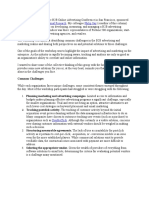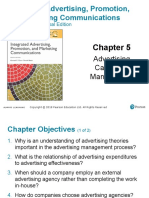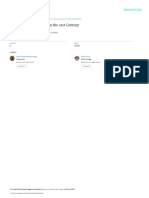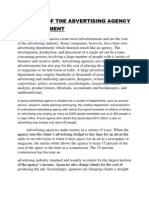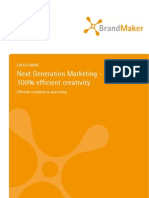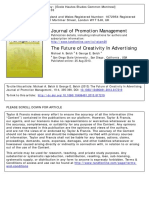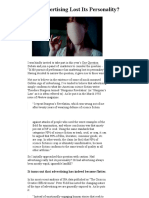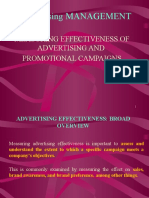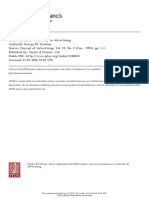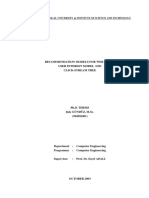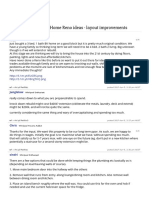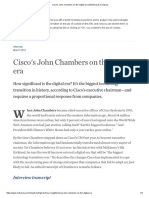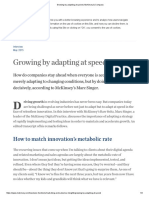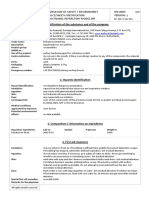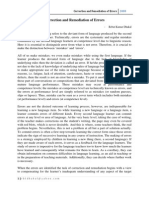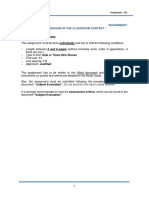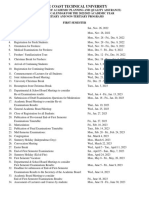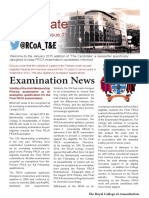0% found this document useful (0 votes)
31 views12 pagesScience Driven Creative
The document discusses how creative agencies need to adopt a science-driven approach to demonstrate their ability to consistently deliver commercially effective work. It argues that relying solely on creative inspiration is no longer sufficient, and that agencies must use data analytics to understand customer behaviors and motivations in order to develop predictive models and frame creative briefs around the key drivers of market share. Those who fail to adopt this scientific approach risk becoming low-cost producers or even going out of business, as procurement increasingly demands evidence of impact on business metrics.
Uploaded by
Anonymous gUySMcpSqCopyright
© © All Rights Reserved
We take content rights seriously. If you suspect this is your content, claim it here.
Available Formats
Download as PDF, TXT or read online on Scribd
0% found this document useful (0 votes)
31 views12 pagesScience Driven Creative
The document discusses how creative agencies need to adopt a science-driven approach to demonstrate their ability to consistently deliver commercially effective work. It argues that relying solely on creative inspiration is no longer sufficient, and that agencies must use data analytics to understand customer behaviors and motivations in order to develop predictive models and frame creative briefs around the key drivers of market share. Those who fail to adopt this scientific approach risk becoming low-cost producers or even going out of business, as procurement increasingly demands evidence of impact on business metrics.
Uploaded by
Anonymous gUySMcpSqCopyright
© © All Rights Reserved
We take content rights seriously. If you suspect this is your content, claim it here.
Available Formats
Download as PDF, TXT or read online on Scribd
/ 12


